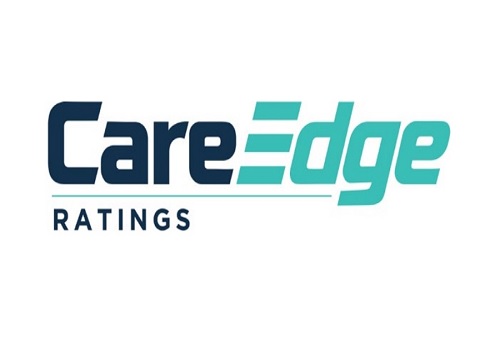Stockbrokers` net margins to fall by 400 bps in FY25 due to regulatory changes by CareEdge Ratings

As per CareEdge Ratings’ latest research on stockbrokers, the revenues of the industry are likely to grow at a slower pace of 13% in FY25 with a 400-bps dent in net profitability on account of various regulatory changes announced in the last few months. These changes have not only impacted trading volumes and profitability but also the revenue streams. The industry's ability to adapt to these changes remains crucial for maintaining stability and growth.
Several regulatory measures have been introduced in the past six to nine months, targeting excessive retail participation in the derivatives market. These include substantial increases in Security Transaction Tax (STT) rates, changes in Market Infrastructure Institutions (MII) charges, and new rules directly affecting F&O trading activities. Notable changes were announced during the July 2024 budget, where STT rates were raised for options and futures orders. Additionally, MIIs revised their charges, effectively reducing brokers' revenues by 10-20% due to the elimination of transaction or turnover charge rebates. Further regulatory changes, including increased contract sizes, margin hikes, and alterations in the treatment of options expiry, have contributed to a sharp decline in F&O turnover, with volumes plummeting from Rs 11,410 trillion in October 2024 to Rs 6,044 trillion in December 2024.
In terms of overall market activity, while F&O volumes have dropped, cash segment volumes have remained relatively stable, with some recovery observed in December 2024. In the near term, CARE Ratings expects the cash segment volumes to stabilise at around Rs 21-22 trillion per month.
Apart from F&O volumes, the regulatory changes have also moderated stockbrokers’ revenue growth. After achieving a 29% growth rate over the past three years, revenue growth will slow to 13% in FY25. The first half of FY25 witnessed industry revenues of around Rs 23,500 crore, which are expected to decline to around Rs 20,500 crore in the second half. While the impact of MII changes has directly reduced revenue streams, net profits, in absolute terms, are expected to remain in line with FY24 levels despite a decline in the net margins. Industry-wide, PAT margins are likely to contract in FY25 to 32% from 36% in FY24, as counter-measures taken by brokers, such as repricing products and expanding margin trading facilities, may not fully offset the impact of regulatory changes.
In response to these challenges, stockbrokers have started diversifying their revenue sources. One key strategy is increasing focus on MTF, which has become an attractive alternative to the slowing F&O segment. MTF allows investors to leverage their investments and has witnessed sharp growth since FY22, with the MTF book growing at a CAGR of 70% and reaching Rs 57,000 crore in FY24. The industry’s MTF assets under management (AUM) have grown further to Rs 81,300 crore by the end of January 2025 and is likely to touch Rs 90,000 crore by the end of FY25 in CARE Ratings’ view. Further, the share of fees and commissions (from traditional broking services) in total revenues of stockbrokers has gradually decreased, from 75.4% in FY22 to 63.5% in FY24, and the share of MTF interest in total revenues has grown from 8.1% in FY22 to 10.4% by September 2024. CARE Ratings expects MTF’s share to rise to 12.0% in H2FY25, underscoring the growing importance of MTF as a revenue stream amid tightening conditions in the F&O market. To expand the MTF book, internal accruals/equity and/or funding via commercial paper borrowings remain the preferred options for stockbrokers. While gearing levels of the industry have increased due to the expansion of the MTF book, they remain comfortable in absolute terms, given the otherwise less capital-intensive nature of the traditional stockbroking business.
Above views are of the author and not of the website kindly read disclaimer










Tag News

BHEL pays dividend cheque of over Rs 109 crore to government













